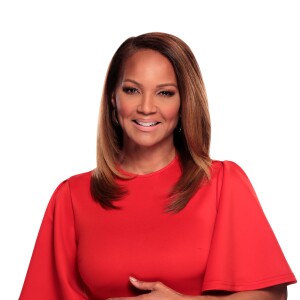There are quite a few people still around who were able to witness history when the Rev. Dr. Martin Luther King, Jr. spoke to the masses in Detroit in June 1963.
After thousands converged on Woodward for the Detroit Freedom March, King spoke to thousands at Cobo Arena and gave his first rendition of the famous "I Have A Dream" speech.
My former morning co-anchor and hall-of-fame journalist Erik Smith was there that day, and I sat down with him at Central United Methodist Church in the heart of Downtown Detroit to talk about it.
"Take me back. How did you end up at that march?" I asked.
"I went along not as a reporter. I hadn't made my journey into being a full-fledged journalist at that point, so I was kind of there to help out," Smith said.
"So you were 20 when you were in the march. How close did you get to Dr. King? did you get a chance to say anything to him that day?" I asked.
"Oh no, I did not get a chance to talk to him that day. I will say I was surprised by his stature I had not seen him in the flesh previously," he said.
King was only 5-foot-6, but his powerful voice could send thunderous waves of emotion through any crowd.
Smith said on that day, he was not able to speak to King, but he later connected by phone.
"I was interested in what was going on in the south I was college age we had freedom riders who had pursued voting rights there in the early 60s," he said.
Smith, who grew up in the city, understood the fight for civil rights, voting rights, and better housing and jobs.
During the march, he said people were not angry, but filled with hope.
"Let's march on together and hold hands in a brotherhood that he desperately wanted to achieve in this country," Smith said.
Related: Rev. Dr. Wendell Anthony reflects on Dr. King’s legacy 60 years after Detroit Walk to Freedom
No fights, no gunfire, no arrests.
"There were 125,00 people right out there on Woodward Avenue that believed that change was coming, and believed that Dr. King was leading them to his phrase to the promised land," Smith said.
As part of the media, Smith remained sidelined but got about 30 feet from the frontline.
"You had no idea though what kind of historic moment this would be, did you?" I asked.
"No, I don't think any of us knew, and I don't want to say too much later, but obviously when he went to Washington, the words that he had practiced here took on a new meaning," Smith said.
His words still resonate.
"If you listen to what he said 60 years ago here and then in August in Washington, that was oratory for generations," Smith said. "The message is as good today as that day I ran down the street with him 60 years ago."
**Editor's note: A previous version of this article had the incorrect name for Central United Methodist Church. It has since been corrected.




